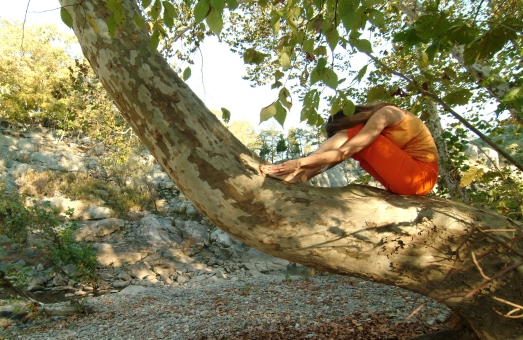Tools for your lotus garden
So how do we get from the muck to the lotus flower? How can we combine what we’ve learned from brain research with experience and intuition, to transform our difficult feelings? From studies on mindfulness, we know that focusing on bodily sensations can help ease pain and depression.
When difficult feeling states arise, rather than escaping them, we want to notice, to really focus on and allow the feelings that come up. Yoga has taught us that breathing slowly and deeply, while observing what is, gives us strength.
With the allowing, we can also name the feeling to calm the brain’s alarm system. Now our reasoning centers of the brain can be called upon and we can ask ourselves, “How do I want to feel?” I think it’s important to be specific here and find the words that really express the quality of your desired feelings. The more we breathe gently and deeply, the better we will be able to access the areas in the brain that facilitate thinking in words.
With this acceptance and expressed intention, we can build a pathway in our bodies from the current feeling state to how we really want to feel. Rather than react as victims of circumstances, we can respond with wisdom.
How do we build this pathway? When I first started this practice, I found that I could calm myself enough to set an intention for how I wanted to feel, but sometimes the distance between how I felt and how I wanted to feel seemed too far. I could just “fake it ‘till you make it,” and act cheerful, but that didn’t feel authentic. And I suspect it didn’t help my body to process those neuropeptides or nourish my cells with new ones. So I started experimenting with tools from yoga and related traditions to get me in resonance with how I wanted to feel.
For all challenging feeling states, begin with the above practice of allowing, focusing, breathing, naming, and setting an intention for how you want to feel. Then, choose something physical to give you a feeling of release. Activities like stretching, running, singing, and shaking out your hands can help. Or you could choose from yoga poses, breathing practices, meditation, hand mudras, or mantra (chanting). These are not hard-and-fast prescriptions, rather, tools that have helped me (and my students) to get to a point of feeling better in the body. When we create a resonance of feeling better in the body, we lay a path from how we currently feel to how we want to feel.
Poses like tree pose are grounding, and child’s pose and other forward bends can be very soothing. Both mudra (symbolic hand gestures) and mantra can be helpful with anger and sadness. Mudras are gestures you create with your hands and fingers, and are considered in yoga as “external expression of inner resolve.” Chanting mantras, such as OM or Sat Nam, can release feel-good hormones like endorphins and oxytocin in the brain.
I have found some Buddhist meditation practices to be powerful methods for soothing pain. For a migraine, for example, I send an “inner smile” to the painful areas and say inwardly, “Welcome, pain. I wrap you in love.” It’s helpful to remember that welcoming the discomfort doesn’t mean you want it to stay, but rather you are acknowledging that your body is communicating with you, and you are honoring that message. Perhaps your body needs some deeper rest than you have been able to give it, and this is a message to stop and breathe for a while so that your immune system can be replenished.
Working with a yoga teacher can be helpful in this process, but you can do this at home by yourself as well. As you breathe with focused awareness and name the feeling, see what kind of physical activity your body feels like it needs in that moment and experiment. Some of these things, like breathing, mudras, and even a mini-tree pose, can be done quite discretely during a difficult conversation, or while feeling anxiety as you wait in line at the grocery store.
Time to take a break and maybe try some of this! Later this week we will revisit this topic, with some reflections from the lakewaters of our practice. Perhaps you will have some reflections of your own to offer…


